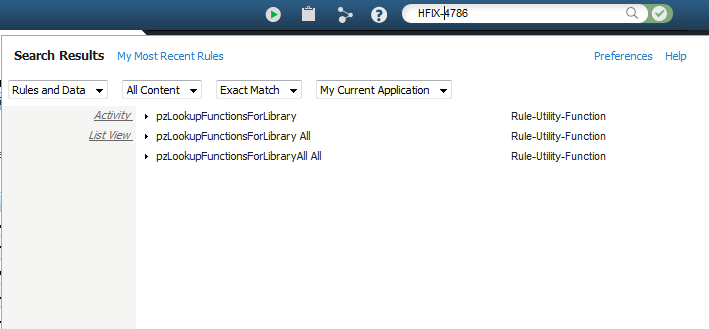Question
Huntington Bancshares Inc
US
Last activity: 15 Nov 2015 17:41 EST
After a jar file deployment, is it possible to see what rules that were deployed got executed at least once?
After a jar file deployment, is it possible to see what rules that were deployed got executed at least once via the application in 6.3 SP1?
Message was edited by: Kip Jackson modified the Discussion Title
-
Like (0)
-
Share this page Facebook Twitter LinkedIn Email Copying... Copied!
Accepted Solution
Pegasystems
US
Perhaps someone has a more straight forward answer, but I would suggest proceeding like this:
1) Trace the import mechanism so you can understand what rules are used (probably functions and activities) for opening the zip file and determining exactly the pzinskeys being imported. Use those same rules yourself for storing away a list of the pzinskeys you are interested in monitoring.
2) use a db query to show how many rows exist in each table, and use that query three times, once before the import, once after the import, and once after using your rules. By comparing the first two usages of the query, the tables whose rows have changed show you which tables the imported rules are cached into. By comparing second and third usages of the query, you'll know which db tables the rules are cached into when the rules are actually used. It's this last set of tables you'll be most interested in when you want to know how many of your rules have been used at least once. [ NOTE: Beware that different kinds of rules are cached to different tables. But your usage of the query will help determine the differences ]
/Eric
Pegasystems Inc.
JP
Hope this prhelp document: Working with the Shutdown Rule Usage facility will answer your question.
Huntington Bancshares Inc
US
Hi Chunzhi -
The article is related to the statistics of all the rules that gets executed by the application. I am actually looking for only the rules that gets deployed as part of that release (jar file deployment) not the rules that were already existing before the deployment. We would want to make sure that those rules got executed at least once.
Pegasystems Inc.
IN
Hi Nipun,
Apologies for the delay in response.
Are you still looking for information related to what rules that were deployed got executed at least once via the application in 6.3 SP1 after a jar file deployment?
Do keep us posted to guide you better.
Thanks!
Huntington Bancshares Inc
US
Yes, I am actually looking for statistics of only those rules that gets deployed as part of that release (jar file deployment), not the rules that were already existing before the deployment of the jar.
CVS Health
US
Hi Nipun,
For your question, follow the below search mechanism from your developer portal. This exercise was performed to check on one of my "HFIX-4786.JAR" related rules (3) details.
To know about the classes I think you can give a try the below navigation from SMA.
SMA -> Adv -> Class Loader -> Class Details -> Class instances
Not sure, if any of these will help you or not.
Thanks,
Ravi Kumar Pisupati.
Accepted Solution
Pegasystems
US
Perhaps someone has a more straight forward answer, but I would suggest proceeding like this:
1) Trace the import mechanism so you can understand what rules are used (probably functions and activities) for opening the zip file and determining exactly the pzinskeys being imported. Use those same rules yourself for storing away a list of the pzinskeys you are interested in monitoring.
2) use a db query to show how many rows exist in each table, and use that query three times, once before the import, once after the import, and once after using your rules. By comparing the first two usages of the query, the tables whose rows have changed show you which tables the imported rules are cached into. By comparing second and third usages of the query, you'll know which db tables the rules are cached into when the rules are actually used. It's this last set of tables you'll be most interested in when you want to know how many of your rules have been used at least once. [ NOTE: Beware that different kinds of rules are cached to different tables. But your usage of the query will help determine the differences ]
/Eric

